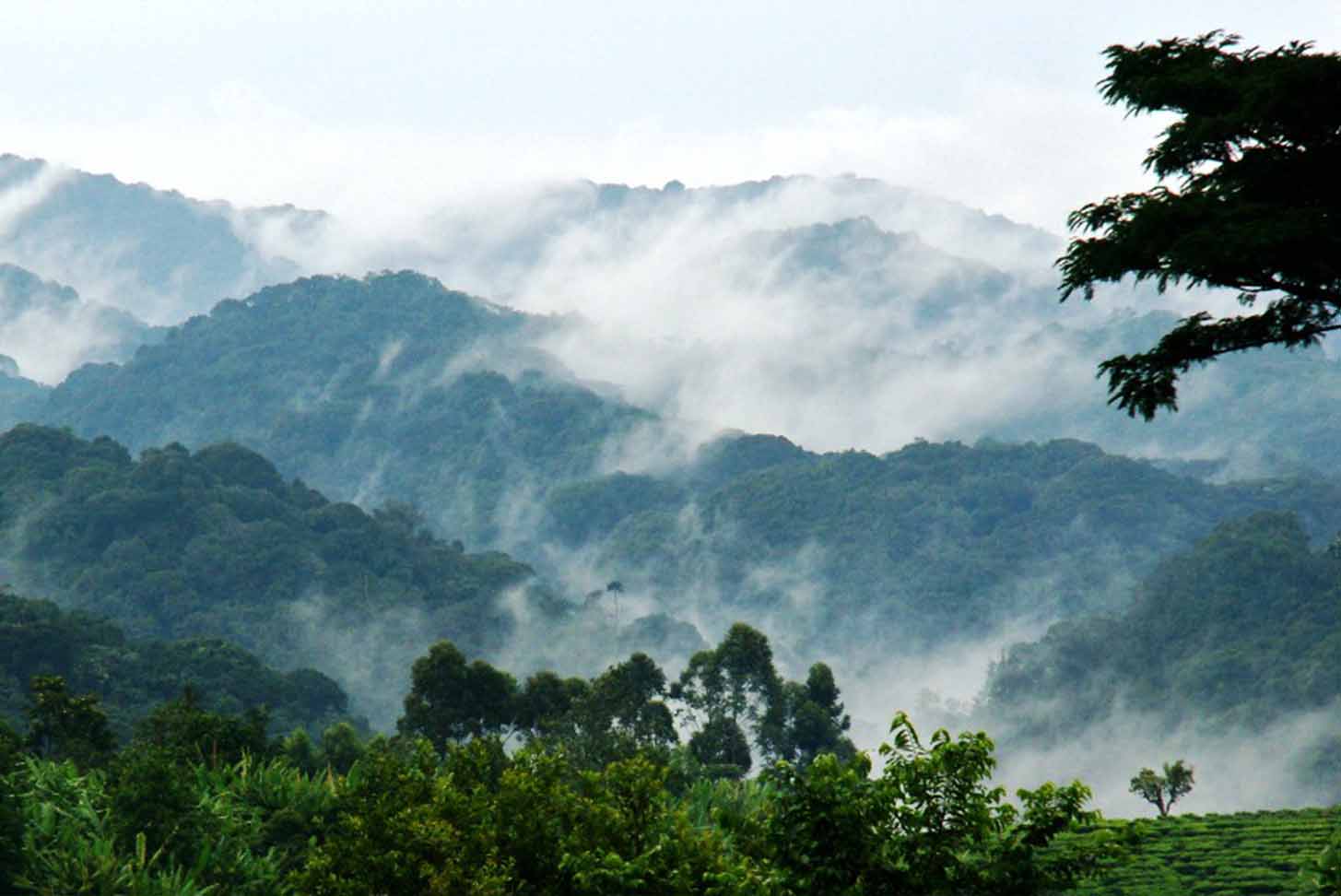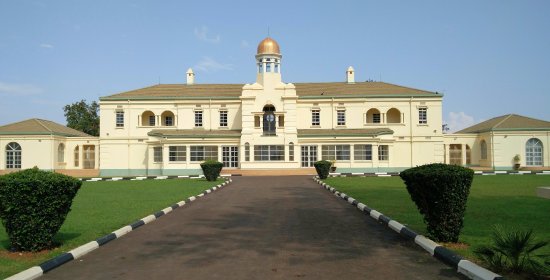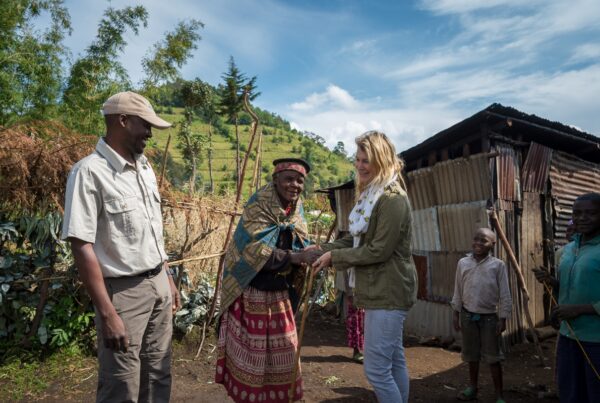Bwindi Impenetrable Forest: UNESCO World Heritage Site Explained
The Mystique of Bwindi Impenetrable Forest
Deep in the southwestern corner of Uganda lies a forest that has been described as one of the most enigmatic and biodiverse landscapes on the African continent. Known as Bwindi Impenetrable Forest, this remarkable ecosystem has been recognized as a UNESCO World Heritage Site, reflecting its global ecological and cultural significance. Bwindi is celebrated not only for its dense, ancient rainforest but also for being home to the endangered mountain gorilla, a species that has captured the imagination of scientists, conservationists, and travelers alike. The forest’s impenetrable vegetation, rolling hills, and mist-shrouded valleys create an atmosphere of mystery and adventure, drawing visitors into a world where nature reigns supreme and human presence is carefully managed. Understanding Bwindi in its full ecological, historical, and cultural context allows travelers and scholars to appreciate the exceptional values that earned it UNESCO recognition and to experience the forest as a living, breathing heritage site.
Geographical Location and Topography
Position within Uganda
Bwindi Impenetrable Forest is located in southwestern Uganda, extending across parts of Kisoro, Kanungu, Rubanda, and Kabale districts. Its location places it in close proximity to the Virunga Volcanoes and the borders of the Democratic Republic of Congo and Rwanda. This positioning situates Bwindi within a larger network of high-altitude forests and volcanic ecosystems that are recognized for their unique biodiversity. The forest lies at elevations ranging from approximately 1,160 meters to 2,607 meters above sea level, creating varied microclimates that support an extraordinary range of plant and animal life.
Terrain and Forest Structure
The forest is characterized by steep hills, deep valleys, and a dense canopy that has earned it the designation “Impenetrable.” Thick vines, moss-covered trees, and undergrowth form a complex, multi-layered structure that provides habitat for countless species. Numerous streams and rivers carve their way through the forest, supporting aquatic life and creating lush riparian corridors. The forest’s rugged terrain presents challenges for accessibility, yet it also serves to protect its ecological integrity, allowing flora and fauna to thrive with minimal human disturbance.
Biodiversity and Ecological Significance
Flora and Vegetation Types
Bwindi is considered a biodiversity hotspot, supporting over 400 species of plants, many of which are endemic or rare. The forest includes montane and lowland rainforest, bamboo thickets, swamps, and secondary growth areas. Giant fig trees, towering mahogany, and strangler figs form the canopy, while the understory is enriched with ferns, orchids, and medicinal plants. This diversity not only supports wildlife but also provides the Batwa and local communities with resources for traditional medicines, food, and cultural practices. Ecologists have noted that the forest’s plant richness contributes to carbon sequestration, soil stabilization, and climate regulation, underscoring its global ecological value.
Fauna and Endangered Species
The most famous inhabitants of Bwindi are the mountain gorillas, with the forest supporting nearly half of the world’s remaining population. These primates are highly social, intelligent, and sensitive to environmental changes, making their protection critical. Beyond gorillas, Bwindi is home to more than 120 mammal species, including chimpanzees, elephants, buffalo, leopards, and numerous monkey species such as red-tailed monkeys and black-and-white colobus monkeys. Its avifauna is equally impressive, with over 350 bird species documented, including the African green broadbill, great blue turaco, and the rare grey parrot. Reptiles, amphibians, and invertebrates thrive in the forest’s humid microclimates, creating a complex and interconnected ecosystem that has earned global recognition.
Historical and Cultural Context
Early Human Inhabitants
The forest has been inhabited for centuries by the Batwa people, an indigenous pygmy community whose traditional lifestyle was closely tied to the forest. The Batwa relied on hunting, gathering, and forest knowledge to sustain their communities. Their intimate understanding of the environment allowed them to utilize medicinal plants, track animals, and harvest food sustainably. Archaeological and anthropological studies have revealed that the Batwa possess a rich cultural heritage, including oral histories, music, dance, and rituals, all of which are informed by their relationship with Bwindi.
Impact of Conservation Policies
The designation of Bwindi as a national park and later a UNESCO World Heritage Site led to the displacement of the Batwa from their ancestral lands. While conservation efforts successfully protected endangered species and preserved critical habitats, they also created social challenges by removing traditional access to the forest. Today, programs aimed at integrating the Batwa into cultural tourism and community projects help to restore economic opportunities while preserving cultural heritage. These initiatives underscore the dual role of Bwindi as both a natural and cultural heritage site, highlighting the need for balanced approaches to conservation and human well-being.
UNESCO World Heritage Designation
Criteria for Recognition
Bwindi Impenetrable Forest was inscribed as a UNESCO World Heritage Site in 1994 due to its outstanding universal value. Recognition was based on both ecological and biological criteria, emphasizing the forest’s exceptional biodiversity, presence of endangered species, and role in maintaining ecological processes. The site is celebrated for its irreplaceable contribution to global conservation and for providing a living laboratory for scientific research. UNESCO’s designation has strengthened international support, funding, and awareness, facilitating long-term preservation of Bwindi’s unique ecological and cultural resources.
Implications of the Designation
World Heritage status has brought heightened attention to Bwindi, resulting in increased tourism, research, and conservation initiatives. It has also introduced stricter regulatory frameworks to protect the forest from illegal logging, poaching, and encroachment. While the designation has promoted global recognition, it has also required careful management to balance tourism, community needs, and environmental integrity. The presence of international NGOs, research institutions, and government agencies ensures that conservation strategies are adaptive, science-based, and culturally sensitive.
Gorilla Conservation and Ecotourism
Mountain Gorilla Protection Programs
The conservation of mountain gorillas in Bwindi has been a flagship success story, involving decades of collaborative efforts by the Uganda Wildlife Authority, international conservation organizations, and local communities. Gorilla families are habituated to human presence under controlled conditions, enabling both scientific research and tourism. Strict guidelines are enforced regarding observation time, group size, and behavior to ensure minimal disturbance. The gorilla protection programs have not only stabilized populations but also raised global awareness about the importance of preserving this critically endangered species.
Ecotourism as a Conservation Tool
Tourism in Bwindi is largely ecotourism-focused, emphasizing responsible, low-impact experiences. Gorilla trekking, guided forest walks, and birdwatching generate revenue that supports conservation, park management, and local communities. Sustainable tourism practices ensure that ecological footprints are minimized while maximizing educational and cultural value. Visitors are encouraged to respect wildlife, adhere to park rules, and contribute to community development projects. This integration of tourism and conservation demonstrates a model where natural heritage preservation and economic development are mutually reinforcing.
Trekking and Visitor Experience
Trekking Routes and Park Sectors
Bwindi is divided into four main trekking sectors: Buhoma, Ruhija, Rushaga, and Nkuringo, each offering distinct experiences in terms of terrain, difficulty, and wildlife encounters. Trails wind through dense rainforest, across streams, and over steep inclines, providing opportunities to observe diverse flora, birdlife, and forest mammals. Trekkers are guided by trained rangers who provide ecological interpretation, safety, and logistical support. The trekking experience, while physically demanding, is enriched by the forest’s atmospheric beauty, misty valleys, and the anticipation of encountering gorillas in their natural habitat.
Best Practices for Visitors
Visitors to Bwindi are advised to prepare adequately for challenging terrain and variable weather. Lightweight, breathable clothing, sturdy footwear, and rain protection are recommended. Photography equipment must be managed carefully due to humidity and forest density. Trekkers are instructed to maintain quiet, avoid sudden movements, and observe gorilla guidelines. These practices ensure both personal safety and the continued well-being of wildlife. By following park rules and respecting ecological boundaries, visitors contribute to the long-term sustainability of Bwindi’s natural and cultural assets.
Scientific Research and Ecological Monitoring
Long-Term Studies and Biodiversity Surveys
Bwindi has been the focus of extensive scientific research, particularly concerning gorilla behavior, forest ecology, and biodiversity monitoring. Long-term studies have documented gorilla family dynamics, social structures, and habitat use, providing critical data for conservation planning. Additionally, surveys of plants, birds, insects, and other mammals contribute to understanding ecosystem processes, species interactions, and the impacts of climate change. These research initiatives not only advance scientific knowledge but also inform adaptive management strategies for park conservation.
Community Participation in Research
Local communities, including the Batwa, participate in ecological monitoring and conservation programs. Their traditional knowledge complements scientific data, providing insights into plant uses, animal behavior, and seasonal environmental changes. Community involvement fosters local stewardship and ensures that conservation benefits are shared equitably. Collaborative research approaches enhance both scientific and cultural understanding of Bwindi, reinforcing its value as a living heritage site.
Challenges and Conservation Threats
Human-Wildlife Conflict
Bwindi’s proximity to human settlements occasionally results in human-wildlife conflicts, including crop raiding by gorillas and other wildlife. Mitigation measures, such as community education, buffer zones, and compensation schemes, have been implemented to reduce negative interactions. Effective conflict management is critical to maintaining community support for conservation and ensuring that wildlife populations can thrive without causing hardship to local residents.
Environmental Pressures
Deforestation, climate change, and illegal resource extraction present ongoing challenges to Bwindi’s ecological integrity. Monitoring and enforcement by park authorities, supported by international conservation organizations, aim to prevent habitat degradation. Sustainable tourism and community-based initiatives provide alternative livelihoods, reducing pressure on forest resources. The resilience of Bwindi’s ecosystem relies on adaptive management, continuous research, and strong partnerships between government, communities, and conservationists.
Appreciating Bwindi as a World Heritage Treasure
Bwindi Impenetrable Forest stands as a remarkable example of ecological richness, cultural heritage, and conservation success. Its dense rainforest, diverse wildlife, and historical significance make it one of the world’s most extraordinary natural sites. UNESCO World Heritage designation has highlighted the global importance of preserving Bwindi, balancing the needs of biodiversity, local communities, and responsible tourism. From the intimate observation of mountain gorillas to the appreciation of Batwa heritage, visitors to Bwindi are offered a profound and transformative experience. The forest’s ecological, cultural, and educational values underscore its status as a living heritage site, where conservation, research, and human engagement converge.
For travelers wishing to experience the wonders of Bwindi Impenetrable Forest, tours and safaris can be arranged through WildHorn Africa, a trusted provider specializing in responsible and immersive wildlife experiences. With expert guidance, logistical support, and a focus on sustainability, WildHorn Africa ensures that every journey into Bwindi is conducted ethically, safely, and memorably. By choosing WildHorn Africa, visitors are guaranteed an opportunity to witness the forest’s extraordinary biodiversity, engage with its cultural heritage, and create experiences that resonate long after leaving its verdant depths.





 WildHorn Africa – Authentic and unforgettable tours across Africa, guided by local experts who know the land, wildlife, and culture best.
WildHorn Africa – Authentic and unforgettable tours across Africa, guided by local experts who know the land, wildlife, and culture best.


